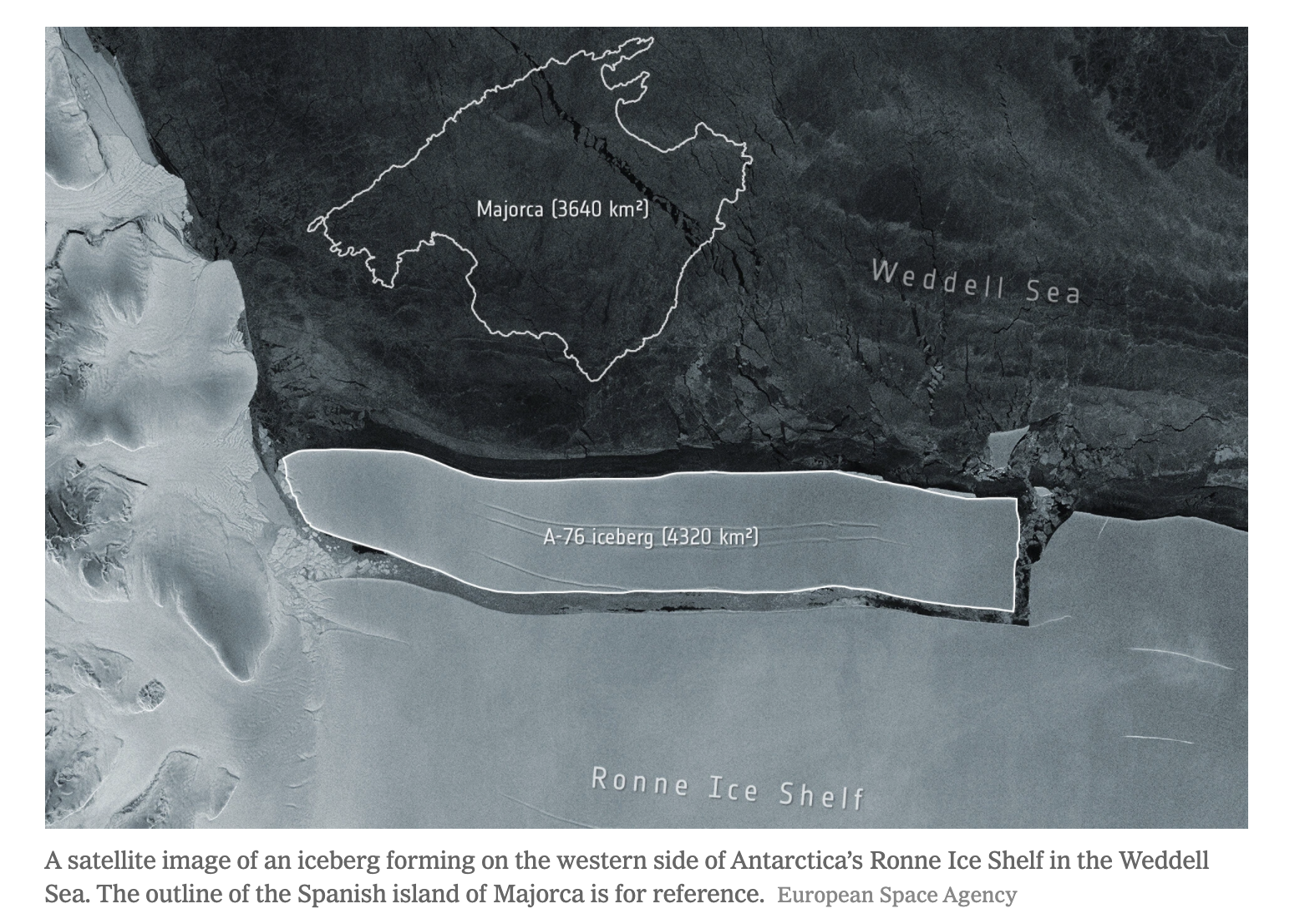An iceberg nearly half the size of Puerto Rico that broke off the edge of Antarctica last week is now the world’s largest, researchers said.
The iceberg, known as A76, following a naming convention established by the National Ice Center, naturally split from Antarctica’s Ronne Ice Shelf into the Weddell Sea through a process known as calving, the center said.
It measures about 1,668 square miles (4,320 square kilometers), making it larger than A23a, an iceberg that formed in 1986 and had a total area of more than 1,500 square miles (4,000 square kilometers) in January.
Researchers sought to put the formation of A76 in context, saying that the forces that severed it from the Ronne Ice Shelf were part of the shelf’s normal life span and may not be directly related to climate change.
